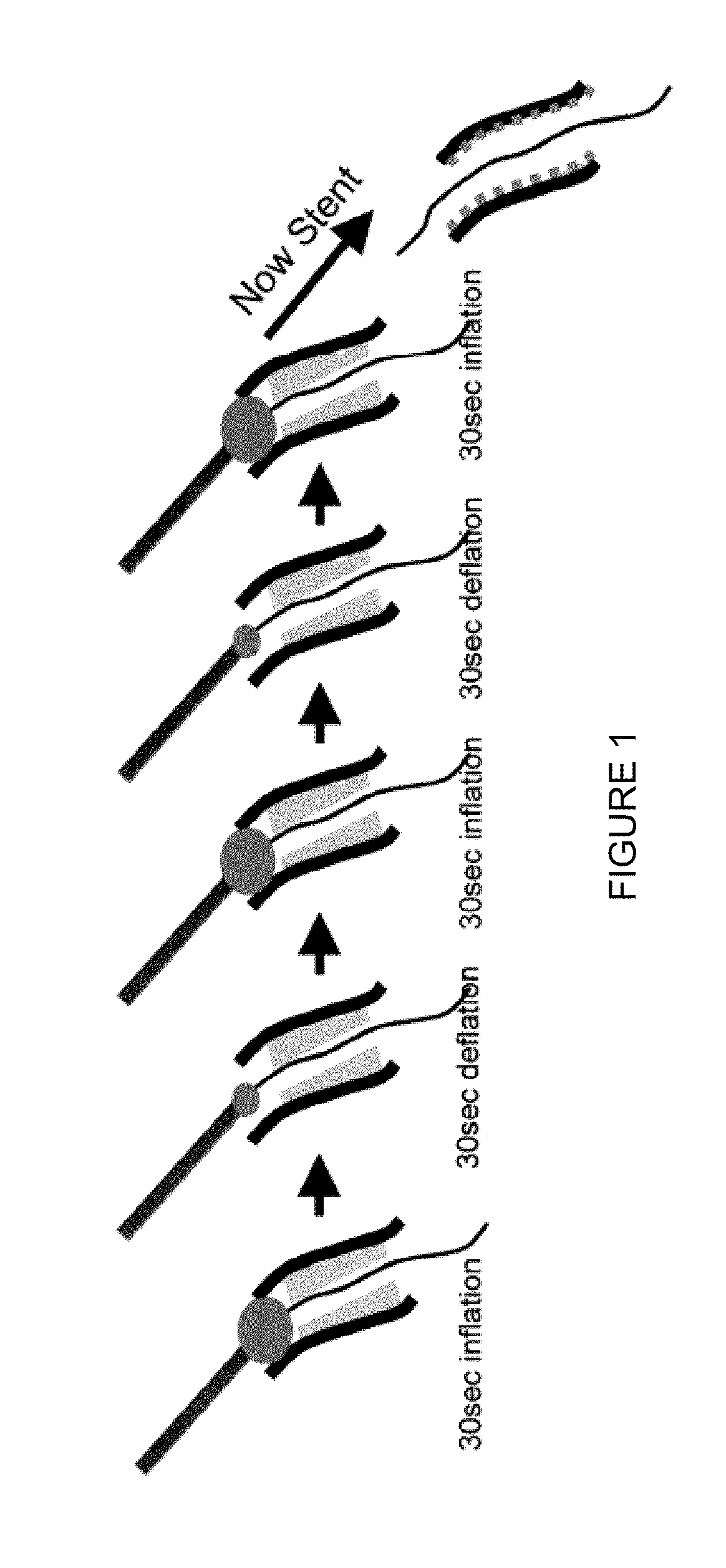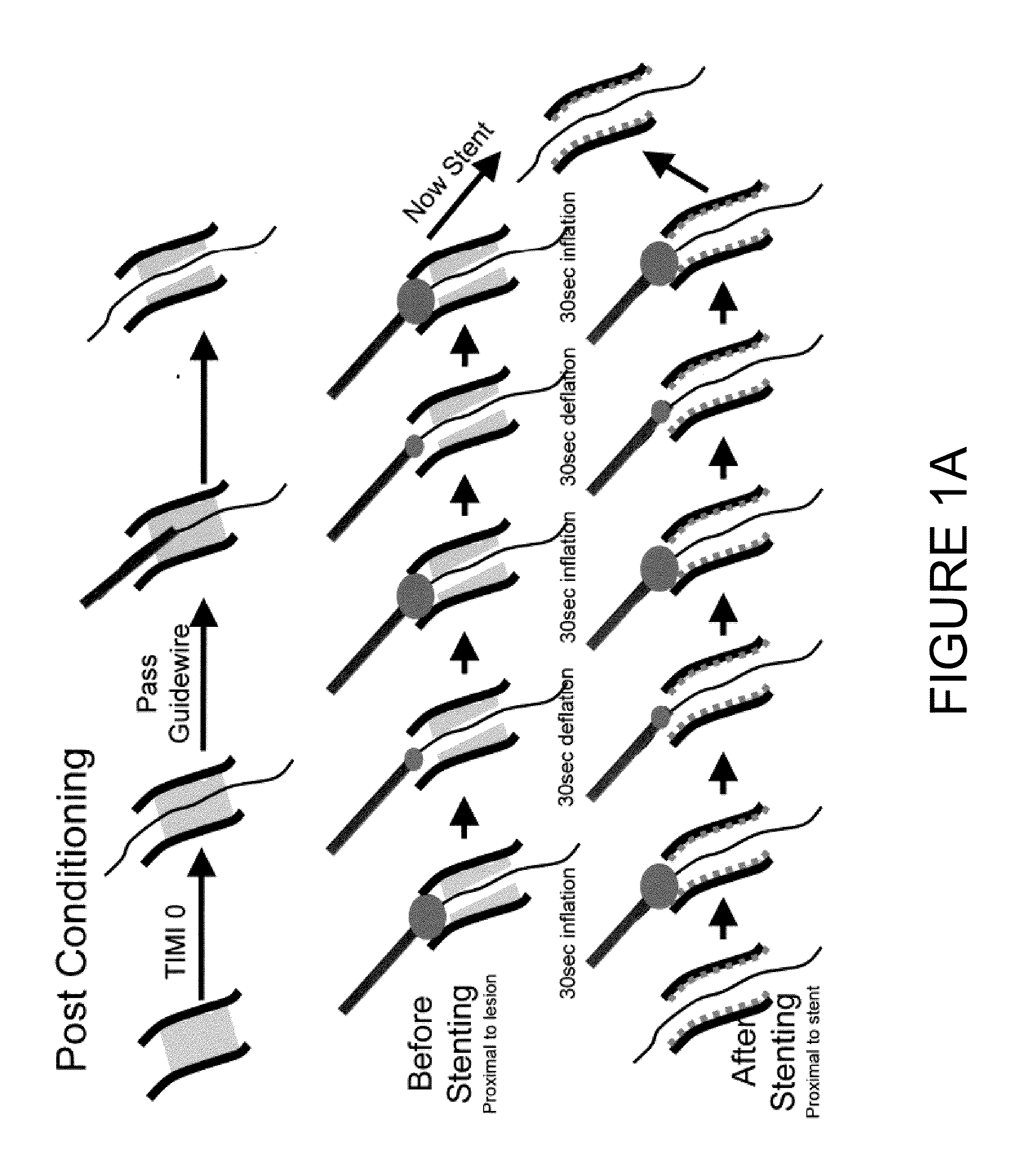Catheter having inflation and deflation lumen useful for preventing or reducing reperfusion injury
a catheter and inflation-deflation technology, which is applied in the field of catheter systems, can solve the problems of increasing the risk of tissue and organ necrosis, increasing the risk of reperfusion injury, and increasing the overall size of the infarct, so as to reduce or prevent the injury of the patien
- Summary
- Abstract
- Description
- Claims
- Application Information
AI Technical Summary
Benefits of technology
Problems solved by technology
Method used
Image
Examples
Embodiment Construction
[0029]It is understood that the subject matter described herein is not limited to particular embodiments described, as such may, of course, vary. It is also understood that the terminology used herein is for the purpose of describing particular embodiments only, and is not intended to be limiting, since the scope of the present subject matter is limited only by the appended claims. Where a range of values is provided, it is understood that each intervening value between the upper and lower limit of that range and any other stated or intervening value in that stated range, is encompassed within the disclosed subject matter.
I. System Overview
[0030]In accordance with the invention, a system is configured to permit sequential, such as intermittent and repeated, inflation and deflation of an expandable member, such as a balloon. In some embodiments, the sequential inflation and deflation of the balloon is achieved by single-touch actuation. The term “single-touch” as used herein means th...
PUM
 Login to View More
Login to View More Abstract
Description
Claims
Application Information
 Login to View More
Login to View More - R&D
- Intellectual Property
- Life Sciences
- Materials
- Tech Scout
- Unparalleled Data Quality
- Higher Quality Content
- 60% Fewer Hallucinations
Browse by: Latest US Patents, China's latest patents, Technical Efficacy Thesaurus, Application Domain, Technology Topic, Popular Technical Reports.
© 2025 PatSnap. All rights reserved.Legal|Privacy policy|Modern Slavery Act Transparency Statement|Sitemap|About US| Contact US: help@patsnap.com



